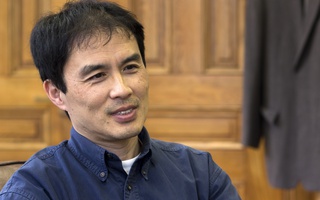{shortcode-7e91b55a5638f044c79e6525237ed80e1596bd96}
Over the past ten years, the Harvard Statistics Department’s efforts to promote gender inclusivity have achieved measurable results, from an increase in female teaching staff and tenured faculty members to an improved departmental climate overall. We commend the Statistics Department for its efforts at bridging the gender gap in STEM at Harvard, and believe that it can do even better moving forward. Specifically, to build on its progress, we believe that the Statistics Department should continue using tools like cross-faculty hiring and the bolstering of female representation in its advising network so that it can continue to bridge the gender gap and serve as a model for other STEM departments to follow.
First established in 1957 as a very small department, the Statistics Department has made great progress diversifying its ranks in a fairly short amount of time. In its early years, undergraduate concentrators in statistics were something of a rarity, and even as late as 2008, there were only 20 undergraduates who declared a concentration in Statistics. But as of last year, that number has ballooned to nearly 200 undergraduate concentrators. We believe this rapid increase can be partly explain by the department’s recent effort to diversify its staff. Today, about a quarter of the tenured faculty in the department are female. When the department was founded, it did not have a single tenured female member.
In order to recruit female faculty members, the Statistics Department implemented “full-time equivalent appointments” to tenured faculty members in other departments and schools at Harvard. For example, Xiaole “Shirley” Liu and Xihong Lin are both tenured professors in the Biostatistics Department at the School of Public Health — and now in the Harvard Statistics Department as well through equivalent appointment. We commend the Statistics Department for using this solution to increase its gender diversity, and hope to see the department continue to use this method of recruitment to increase diversity in the future.
Nonetheless, the recruitment of female faculty members itself is not enough. The predominantly male department must also reflect on how it can change its culture as well. Along these lines, we applaud the department for its active emphasis on making the “climate” of its courses more inclusive. For example, Professor Joseph K. Blitzstein has made active efforts to diversify his teaching staff, recruiting many female teaching fellows for his very popular course Statistics 110: "Probability." Students also have given positive feedback about the encouragement and support received by professors in the Statistics Department.
Yet in the upper level statistics courses, the gender imbalance becomes more apparent with fewer female teaching staff. The Statistics advising network is still lacking in diversity as well, with students complaining about having to rely on student-run groups such as Gender Inclusivity in Mathematics for mentorship.
Overall, we appreciate the Harvard Statistics Department’s efforts toward gender inclusivity, especially in the face of other notable STEM lapses in diversity at the University such as the Harvard Math Department. Every department must ensure that all students feel both supported and included in their classes, and the Statistics Department can serve as a model for other departments on how to deliberately reform internal culture to be more diverse. Of course, there is still room for improvement, but we hope to see other STEM departments step up and follow the example that the Statistics Department has set.
This staff editorial is the product of discussions at regular Editorial Board meetings. In order to ensure the impartiality of our journalism, Crimson editors who choose to opine and vote at these meetings are not involved in the reporting of articles on similar topics.
Read more in Opinion
On True IllusionsRecommended Articles
-
Stats Department Expands to Accommodate Upward Trend in ConcentratorsAfter a statistically significant growth in concentrators in recent years, several professors say Harvard’s Statistics Department is reaching its limit.
-
 'Party of One': Diversity and Isolation in Harvard's Faculty
'Party of One': Diversity and Isolation in Harvard's Faculty -
 'A Sort of Everyday Struggle'
'A Sort of Everyday Struggle' -
Not Yet an Equals SignIt should not be so revolutionary for a woman to earn a tenured faculty position in mathematics at the University.
-
 Changing the Distribution: The Transformation of Harvard’s Statistics Department
Changing the Distribution: The Transformation of Harvard’s Statistics Department













